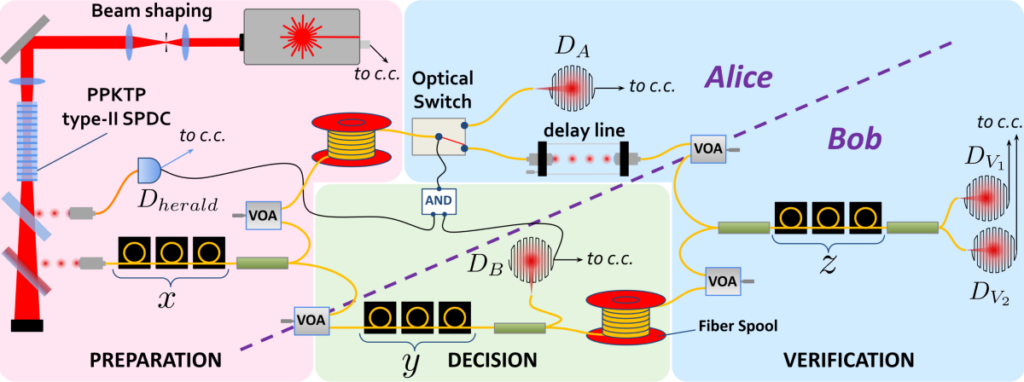Successful experimental demonstration of quantum weak coin flipping using IDQ’s ID281 SNSPDs and ID230 detectors
In work recently published in Nature Communications, researchers from Sorbonne Université, the University of Vienna, California Institute of Technology and Université de Paris have, for the first time, experimentally demonstrated quantum weak coin flipping – a cryptographic primitive which allows two mistrustful parties to agree on a random bit when they favor opposite outcomes.

The quantum protocol implemented in this study allows one to achieve information-theoretic security while also detecting whether one’s opponent is cheating – something which is not possible classically. This demonstration was made possible thanks to the detection performance of SNSPDs at telecom wavelengths, where the team made good use of a high-efficiency, low-noise ID281 Superconducting Nanowire system from IDQ.
This was a subtle experiment, where proof of the quantum advantage for our target cryptographic task relied on extremely low dark counts and very high quantum efficiency of the single-photon detectors. These conditions were met by IDQ’s SNSPDs and essentially enabled this demonstration, which would have otherwise been impossible. IDQ’s SPAD-based module also provided the performance and ease of use that we needed for the heralding step in our demonstration.
Eleni Diamanti, Vice Director, Paris Centre for Quantum Computing, CNRS



